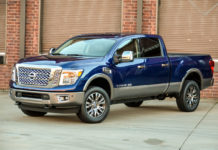WASHINGTON: It appears we've hit another consumer milestone, and it's not one we should be proud of either.
Last year it was our savings rate. In 2005, for the first time since the Great Depression, the personal savings rate fell into negative territory.
This year consumers have hit another landmark. The majority of auto loans are now five years or longer.
New vehicle loans over 60 months accounted for nearly 55 percent of loan originations, according to the Consumer Bankers Association's 2006 Automobile Finance Study. Used vehicle loans over 60 months accounted for 40 percent of originations.
In 2000, five-year or longer car loans comprised just 22 percent of all such lending.
Have people lost their financial minds?
“It is to a certain degree a sign that people are stretching,” said Fritz Elmendorf, vice president of communications for the Consumer Bankers Association. “It does raise the question of whether people are buying more car than they can afford and should they put the brakes on their car-buying behavior.”
This trend is troubling because stretched-out auto loans have led to another milestone, an increase in the percentage of vehicle owners who are “upside down.” That's a term to mean your loan balance is higher than the value of your car. With a longer-term loan, the value of the car declines faster than the loan balance.
That certainly is not a good position to be in if you want to trade or privately sell your vehicle. Oh, and you better pray you don't get into an auto accident and the car is totaled. If it is, you won't get enough of an insurance payment to pay off the loan.
In 2001, 25 percent of trades were upside down, according to retail transaction data from the Power Information Network, a division of the marketing research firm JD Power and Associates. In 2005, 33.5 percent of car buyers owed more on their trades than the vehicles were worth.
I understand the temptation to take out a longer loan. The average new vehicle loan size increased by 4 percent to $23,534 from $22,638 the year before, the CBA found. The average used vehicle loan increased 3 percent to $16,419, up from $15,961 a year earlier. Those are the averages. Certainly many people are spending far more than the average for a ride.
There's another reason why the loans terms are being drawn out, Elmendorf said.
“Fundamentally [consumers] are looking for monthly payments they can afford, even if it means adding a year onto their loan,” he said.
While consumers may prefer longer loan terms, the CBA survey showed that the lowest auto loan rates, at about 5.5 percent, were available for terms of four years or less, compared to rates approaching 7 percent for loans longer than five years.
Recent data from Edmunds.com, an online resource for automotive information, showed 33.5 percent of car buyers had a loan term of 72 months. The average loan size was $26,156 with an interest rate of 9.6 percent.
Let's say you finance a car for $23,500 for 60 months at a 7 percent interest rate. Your monthly payment is $465.33. At the end of that loan you would have paid about $4,420 in interest. Finance that same vehicle for 48 months at 5.5 percent and you will pay about $2,730 in interest. Your monthly payment is higher, $546.53, but you save $1,690 in interest over the life of the loan.
If you need to keep your monthly payment around $465, get a less expensive car. Buy one in the $20,000 range and you can have the monthly payment you want and you won't have to stretch your payments out for five years. A $20,000 car loan for 48 months at 5.5 percent would get you a monthly payment of $465 and you only pay about $2,326 in interest. Read More








